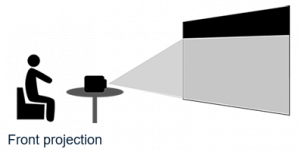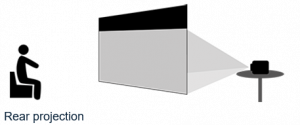Home Cinema Buying Guide
Electric screen - elegant and comfortable solution with the use of a remote to raise and lower the screen.
The electric screen is an enhancement to the manual screen. This range offers features suitable for the entry level as well as the professional user. The electric screen series offers flexibility and includes tab tension screens or the basic electric screen.
![]() Electric instead of manual operation
Electric instead of manual operation
![]() Electronically operated screen preserves the fabric
Electronically operated screen preserves the fabric
![]() Convenient operation by pressing a button or remote control
Convenient operation by pressing a button or remote control
![]() Large image sizes and high quality materials
Large image sizes and high quality materials
![]() Consistent image frame positioning
Consistent image frame positioning
![]() Power supply required
Power supply required
![]() Requires cabling
Requires cabling
Ideal for Your very own Home cinema or conference room use.
Tripod screen - a classic among mobile solutions
If you require mobility and need to move the screen from venue to venue, then this is the right option.
Tripod screens are very convenient: they are made up of one piece and thanks to their tripod legs, are very stable, even on surfaces that are not level. For easy transportation.
![]() Cost effective
Cost effective
![]() Easy setup
Easy setup
![]() Height adjustable
Height adjustable
![]() Flexible use
Flexible use
![]() Requires broader footprint
Requires broader footprint
![]() Slightly old fashioned appearance
Slightly old fashioned appearance
![]() Only available up to 2.5m
Only available up to 2.5m
Excellent value for money, suitable for smaller, mobile projections
Projection type - front or rear projection?
There are 2 types of projection: front and rear.

The projector is positioned in front of the screen, on the side of the audience:
Suitable for home cinema, living room, conference room

The projector is positioned behind the screen; the audience is in front of the screen. The advantage is that the audience or presenter/ performer cannot interfere with the projection.
Suitable for exhibitions or theatre
Screen formats - which format is suitable?
The projection screen format will depend on the application: Do you want to use your projector screen in a small home cinema room or in a large auditorium? The screen size depends also on the distance between projector and screen, the distance between audience and screen and the native projection format of the projector. The projected image has a specific aspect ratio, in a certain image width and image height. The square 1:1 format is the right choice when using an overhead projector (OHP) as it projects in this format. However, this has been largely phased out in favour of digital projectors. Presentations for instance, are reproduced in 16:10 format or more rarely, in 4:3 format. Films/videos are usually shown in 16:9 format, occasionally 21:9. To achieve an optimal projection result, it therefore makes sense to select a screen in the format best suited to the intended use and one that corresponds to the native format of your projector.
For presentations: 16:10, less common 4:3
For films: 16:9, less common 21:9
Positioning - what distance is required?
The correct positioning of projector and screen will depend on the specific projector you have.
The optimum distance between screen and audience depends on the resolution of the projector and the screen width. The general rule of thumb is: the lower the resolution, the further one should be seated from the screen.
If you sit too close to the screen, you will see the individual pixels
The lower edge of the screen should be hung at about 1.2-1.3m above the floor so that the screen is eyelevel with the audience.
4K resolution: distance = screen width x 1
Full HD resolution: distance - screen width = 1.5
HD Ready / WXGA resolution: distance = screen width x 1.8
The lower the resolution, the further the distance
Screen Surfaces explained
Matt White
Matt white vinyl reflective surface diffuses projected light in all directions, so image can be seen from any angle. MW provides accurate colour rendition as well as superior clarity. Recommended for use with all high light output projection devices. Better in a low ambient light environment.
Gain = 1.1
Glass Bead
Spherical glass beads embedded in the surface provide more reflection giving a brighter image compared to matt white. This brighter image is limited to a smaller viewing angle than matt white. Glass Bead screens will slightly alter the purity of the colours displayed... and will have 'sweet spots' where the picture is at its premium... the picture at other viewing angles can appear slightly darker (yet still lighter than a MW screen).
Gain = 2.5
Fiber Glass
Modern replacement for Glass Bead, has the added advantage of being wipe clean.
Gain = 1.6
Matt Grey
High-contrast Matt Grey, similar to Matt White, but with a darker surface designed to enhance the blacks of the projected images, even as whites and lighter colours are maintained. Performs well in ambient light conditions. With a lower power projector the whites are not quite as bright as with other surface greys, but dark tones appear much darker.
Gain = 0.8
